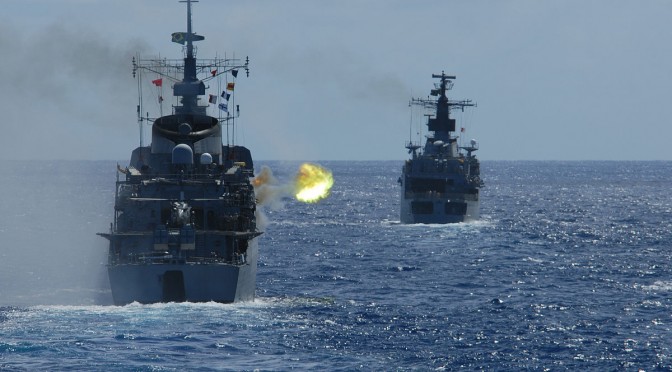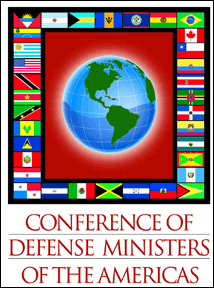By Alex Calvo
More than 30 years after the Falklands War, the South Atlantic remains a focus of tension, given Argentina’s refusal to acknowledge the right to self-determination and rule out the use of force. In conventional terms, generally speaking the balance of forces has moved in favour of the UK, despite the current carrier gap (while two Queen Elizabeth II class carriers are being built) and deterioration of amphibious capabilities. British defence planners seem to rely first and foremost on the air and anti-aircraft assets permanently deployed at Mount Pleasant plus the few but powerful Royal Navy units in the region. Together, they seem to be able to deal with Argentina’s current order of battle in the event of an attempted invasion or blockade. For some, this is the end of the story, unless Buenos Aires rearms, starting with modern aircraft, which China and Russia may have offered according to different unconfirmed reports. However, there is no reason why any actor in a given conflict should stick to a particular strategy or mode of warfare. As the saying goes, “the enemy has a vote”, and given British conventional superiority (despite the lack of embarked aviation and deterioration in amphibious capabilities) Buenos Aires may choose to upgrade her strength in this field … or change tack and go asymmetric. Actually, that would not really be a novelty, since in the 1960s and 1970s a number of incidents took place featuring civilians and special operations. In 1966, a nationalist group hijacked a Dakota airplane over Patagonia and landed in Stanley Airport, and 10 years later Argentine forces set up a clandestine weather station on South Thule (South Sandwich Islands), which British authorities detected but kept quiet about to avoid an escalation. An echo of such actions was seen in 2011, when two Argentine civilians attempted to reach the Islands on a kayak.
Furthermore, events in the South China Sea over the last few years are a clear reminder of the many ways in which force can be used in disputed maritime domains. Thus, anybody following the South Atlantic must keep in mind the full spectrum of warfare, from non-conventional to sub-conventional, with all possibilities in between, and their myriad combinations. Defence planners will need to incorporate such assessments in their decisions on training, equipment, doctrine, and Rules of Engagement (ROEs). Otherwise, one may run the risk of preparing to fight yesterday’s war, as historians have more than once accused generals and admirals of doing.
Last year, in the spring and summer, clashes between China and Vietnam in the South China Sea / East Sea featured oil rigs protected by a large number of vessels, ranging from coast guard and other state ships to trawlers, while some observers also stressed the presence of naval and air assets. These clashes did not involve exchanges of fire, instead non-lethal kinetic means ranging from water cannons to ramming were used. This was in line with previous clashes between China and Japan and China and the Philippines, yet what was different was the numbers involved, and the deployment of specially-equipped ships. Some reports mentioned more than 100 vessels of different kinds, for example a 24 June 2014 Vietnamese report mentioned “44 coast guard ships, 15 cargo ships, 19 tugboats, 35 fishing vessels and five battleships” guarding a rig. Concerning special equipment, Chinese trawlers with “reinforced prows” featuring a “large metal object” appeared to be much better at pushing and damaging other vessels.
The question is then, could Argentine choose asymmetric non-lethal force over conventional rearmament? A number of scenarios come to mind, from the occupation of a minor island by activists, special forces, or a combination of both, to the operation of trawlers escorted by non-naval state vessels. Things may get more complex with the involvement of third parties. Could Argentina grant a Chinese company a licence to explore for oil in the Falklands’ EEZ? Or to fish there? Could Buenos Aires then deploy non-naval state vessels (coastguard units or simply law enforcement personnel on board civilian vessels) to protect Chinese trawlers or even a rig? To make things more complex, Taiwanese trawlers operate in the region, under license by the Falklands Government.
If this happened, British authorities may be faced with some of the dilemmas familiar to governments in the South China Sea. In theory asymmetric tactics may be dealt with by drawing a line in the sand, threatening to respond with conventional force. In practice, however, such a “tripwire” policy can be very difficult to implement given the natural reluctance to risk an escalation and appear as an aggressor before international public opinion if, for example, the life of civilian activists or fishermen was endangered.
Responding to asymmetric tactics may require a different kind of training, ROEs, and equipment than those designed with conventional operations in mind. An advanced anti-aircraft missile may be very useful in dealing with an inbound bomber, less so when confronting a civilian airplane full of activists. A nuclear submarine is a great asset when facing a surface combatant, not so much when what you see in your periscope is a trawler. To add to these challenges, defending forces must still be ready to engage in conventional operations. Furthermore, there is no reason why the other side cannot combine conventional and asymmetric tactics. By analogy with the USMC “Three Blocks” doctrine perhaps we may need to talk about a “Three Islands” doctrine.
While it may be too early to know what direction the confrontation in the South Atlantic may take, there are reasons to expect Buenos Aires to at the very least consider going asymmetrical. These include a much shorter time frame than that required for conventional rearmament, lower costs, and the possibility to graduate the level of confrontation, in the hope of securing political concessions without crossing the threshold of armed conflict. Concerning the British response, we can already see some evidence that London may be preparing for a new stage in the long-running conflict. In particular, for an scenario where Argentine special forces seize a minor island, which may explain the recent announcement that two Chinook troop-carrying helicopters will be deployed from next year.
Alex Calvo, a guest professor at Nagoya University (Japan), focuses on security and defence policy, international law, and military history, in the Indian-Pacific Ocean Region. He tweets at Alex__Calvo and his work, which includes “China’s Air Defense Identification Zone: Concept, Issues at Stake and Regional Impact”, Naval War College Press Working Papers, No 1, US Naval War College, 23 December 2013, available at http://www.usnwc.edu/Publications/Working-Papers/Documents/WP1-Calvo.aspx, can be found at https://nagoya-u.academia.edu/AlexCalvo




 some decades ago projected a plan for the inter-American defense coordination of the maritime traffic (Plan para la Coordinación de la Defensa del Tráfico Marítimo Interamericano – PLANDEFTRAMI, 1959). The CODEFTRAMI substituted the first plan by the end of 1996 and it has divided the areas into four groups: North Atlantic, South Atlantic, North Pacific and South Pacific. Whereas differently oriented, the process of institutionalization was effective for the Atlantic South Area, called AMAS (Área Marítima del Atlántico Sur), that was formed by Brazil, Argentina, Uruguay, and Paraguay.
some decades ago projected a plan for the inter-American defense coordination of the maritime traffic (Plan para la Coordinación de la Defensa del Tráfico Marítimo Interamericano – PLANDEFTRAMI, 1959). The CODEFTRAMI substituted the first plan by the end of 1996 and it has divided the areas into four groups: North Atlantic, South Atlantic, North Pacific and South Pacific. Whereas differently oriented, the process of institutionalization was effective for the Atlantic South Area, called AMAS (Área Marítima del Atlántico Sur), that was formed by Brazil, Argentina, Uruguay, and Paraguay.